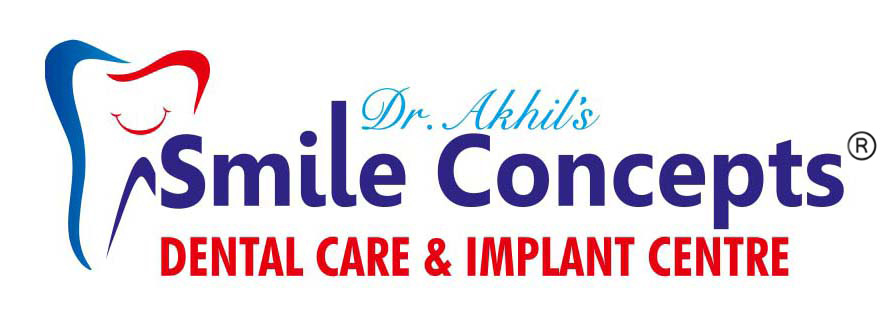Dental implants is the advanced treatment done to restore the perfect smile with perfect shaped teeth. Implantology is the branch of dentistry dedicated to dental implants. A dental implant is an artificial tooth root that is inserted into the jawbone, often takes the form of a screw that is composed of titanium or titanium alloy.
A dental implant is a surgical component that interfaces with the bone of the jaw or skull to support a dental prosthesis such as a crown, bridge, denture or facial prosthesis. The basis for modern dental implants is a biologic process called osseointegration, in which materials such as titanium form an intimate bond to bone. The implant fixture is first placed so that it is likely to osseointegrate, then a dental prosthetic is added. A variable amount of healing time is required for osseointegration before either the dental prosthetic (a tooth, bridge or denture) is attached to the implant or an abutment is placed which will hold a dental prosthetic/crown.


Implants Replace Missing Teeth
Dental implants can be considered for patients who
are missing one or more teeth. Depending on the
number of teeth to replace, an artificial crown, a
full or partial denture or a bridge will be prepared
and installed on the abutment(s). If the patient
only has one missing tooth, a single crown will be
sufficient. If several teeth need to be replaced,
many options are available: using a single implant
with multiple crowns joined by a bridge or a
prosthesis, or using multiple implants with distinct
crowns.
This choice is up to the patient, according to the
treatment plan recommended by our implantologist.
Our Implantologist evaluates the overall health of
your mouth, gums and also the bone with both
clinical examination as well as radiographic
examination.
3D Imaging and Treatment Planning
State-of-the-art, highly precise 3D digital imaging have made implant procedures faster and highly predictable. Our implantologist use these tools to analyze the anatomy of your jaw and determine the best sites for implant placement before surgery. This saves time and money, and shortens recovery time.
BETTER TEETH, BETTER HEALTH
Advantages of implant over other treatment modalities
• Implants allow the installation of fixed or
removable dental prostheses.
• They are more comfortable and discreet because
they do not cause any unpleasant friction or
movement on the gums as in the case of removable
prostheses that are not mounted on implants (e.g.:
partial or complete dentures). It is possible to get
an implant-supported denture that does not even
cover the palate at all.
• No adhesive (denture glue) is required to hold the
implant-supported prosthesis in place.
• Implants offer a better stability to artificial
teeth, which facilitates chewing and digestion,
improves comfort and facilitates speech.
• The patients are not forced to adapt their
diet.
• Implants allow distributing forces between
implants and the gums, bones and remaining teeth,
which helps to reduce the stress on these
structures.
• Implants give the impression of having natural
teeth, both aesthetically and functionally, and act
as an artificial root anchored in the bone of the
jaw, like a natural tooth root
• The two main components of an implant (the
artificial crown and the implant itself) will not be
affected by tooth decay.
• Offer a reliable and longterm solution. Dental
implant is a good investment given its life
expectancy.


TECHIQUES
Patients with the healthy gums and the strong bone
support can get benefit from dental implants. Types
vary according to the stages categorized on the
basis of surgery and techniques used.
TYPES OF DENTAL IMPLANTS
1. One stage dental implant
2. Two stage dental implant
ONE STAGE DENTAL IMPLANT
In this procedure, implant can be done on the same
day of surgery. Healing period is 3 to 6 months and
the crown is placed on the implant to restore the
normal healthy tooth. It is done when bone quality
is good to ensure the implant stability.
TWO STAGE DENTAL IMPLANT
In this type a second surgery is required. It is
done when there is no need for immediate need for
cosmetic solution. After healing the second surgery
is performed to attach the abutment to secure the
crown at place. This procedure is done when there is
necessity to regenerate bone around the implant at
the time of placement.

